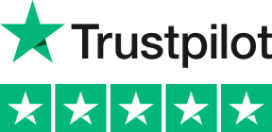A couple of months ago I found myself in a fairly common situation: I had some savings in the bank, generating almost nothing, and inflation kept eating away at their real value. I had heard about crowdfunding as a form of investment, but it always sounded a bit far away, maybe for more experienced profiles than me. Until I decided to investigate.
This is the story of my first month as a small investor in a real estate crowdfunding platform, with everything I experienced, learned and observed. If you are considering taking the leap, maybe it will help you to have a clearer picture, without empty promises or drama.
Day 1: The decision
Like many, I started with Google. I wanted something secure, with clear terms and that didn’t require a fortune to get started. I came across several articles and listings that talked about different crowdfunding platforms in Spain, each with its own focus: some more focused on corporate lending, others on renewable energy, others on residential real estate.
I was attracted to the idea of investing in residential projects because it seemed more tangible. In addition, the real estate sector always seemed more stable to me than others, and the returns promised – from 7% to 10% per year, depending on the project – seemed reasonable without being exaggerated.
Day 3: Registration and first investment
After comparing several options, I chose wecity, because of its clear design, the way they explained each project, and because they were authorized by the CNMV. Registration was simple: identity validation, bank account, and in a few minutes I was inside.
I explored several ongoing projects, read the documentation, and finally decided to invest €1,000 in a bridge loan to finance a development in Madrid, with an estimated duration of 12 months. What gave me confidence was:
- Detailed information of the promoter
- Business plan and economic viability
- Appraisal report and mortgage guarantees
I also really appreciated that the contract was available before I invested, which allowed me to know exactly what I was signing.
Week 2: Active waiting
Once invested, I started to do what every novice investor does: look at the user panel every day waiting for updates. I soon understood that it is not an investment of daily monitoring, but of trust and planning.
I did, however, receive weekly emails with news of the project’s progress, which helped to keep me calm and well informed. There were photos of the progress of the work, comments on the marketing of the houses, and reminders of the planned schedule.
Week 3: Talking to other investors
In forums and social networking groups I discovered that I was not the only newbie. What was interesting was to see that many users had a diversification strategy: instead of putting everything in one project, they invested small amounts in several, to spread the risk. This is something I already have in mind for my next investment.
I also understood better how expected profitability works: it is not magical or immediate, and it must be taken into account that each project has its own time frame. I was pleased to learn that wecity also has projects with different structures: mortgage-backed loans, stock financing, and even complete developments.
Week 4: First month reflections
After 30 days as a real estate crowdfunding investor, these are my initial conclusions:
- You don’t need to be an expert: today’s platforms, such as wecity, are designed so that anyone can understand what they are investing in.
- Transparency is key: at all times I knew what I was doing with my money, with no fine print.
- Patience is part of the game: it is not an investment for day trading or next day returns.
- Access is real: I invested €1,000, but I saw that there were people starting with €300 or €500. It is more democratic than I thought.
- I learned much more than just “putting money down”: I now have a better understanding of concepts such as “first-ranking mortgage collateral”, “accrual period”, or “due diligence”.
Next steps
My intention now is to diversify: try another project in another city, perhaps with a different time frame or structure. I am also exploring more resources and articles on the wecity website to better understand the opportunities and risks.
I can’t talk about profitability yet, because my investment is still ongoing. But I can say that I feel calmer and more empowered as an investor.
Conclusion
Investing in crowdfunding platforms in Spain may seem intimidating at first, but with the right information and a prudent approach, it becomes an accessible, educational and potentially profitable experience.
My advice? Start with an amount you don’t mind committing, be well informed about each project and don’t look for immediate results. Investment is a process, not a stroke of luck. And as in any good story, the important thing is to start with the first step.

